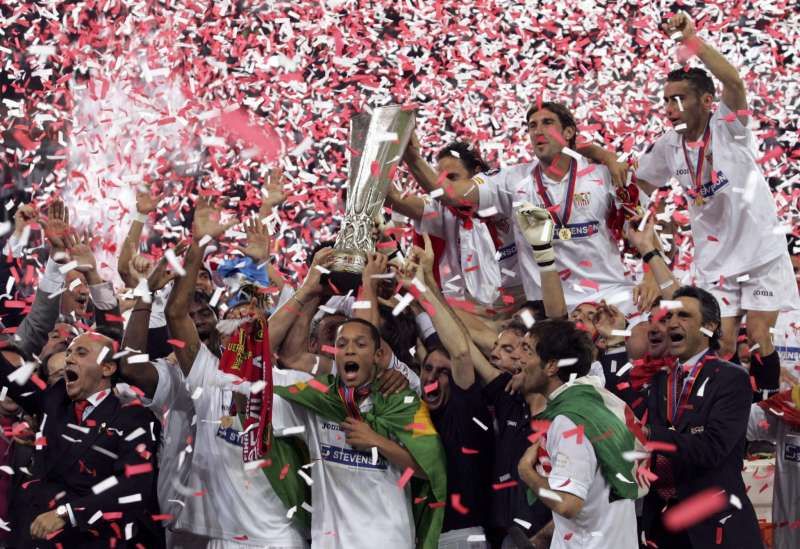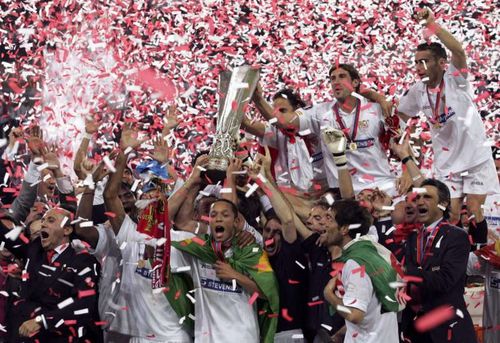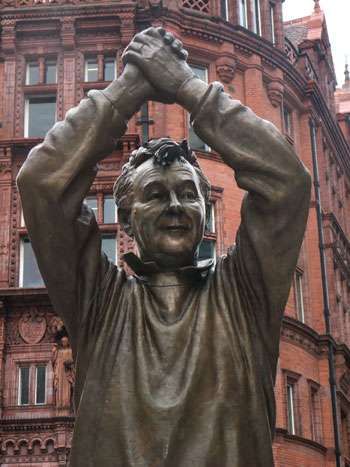
Monchi, Walsh and the orchestrators of unprecedented success
In the summer of 2013, when Manchester City confirmed the acquisition of Alvaro Negredo from Sevilla for a fee of £16.4 million, the world of football wondered how the men from Sevilla were going to cope in his absence. The director of football at Los Rojiblancos, though, was way ahead of everyone else.
Monchi had already replaced Negredo with a certain Colombian forward who went by the name of Carlos Bacca, for less than half of that sum. Everyone knows how Bacca managed to fill the void, while his predecessor at the Sanchez Pizjuan struggled at the Etihad.
Andalucian success
When Monchi took over the role of Sporting Director in 2000, Los Rojiblancos were fighting relegation and bankruptcy at the same time – all the while being on a 52-year-old trophyless streak. Since then, they have won five Europa Leagues and have been involved in 14 finals in the last 10 years.
More than a sporting miracle or a one-off success story, this sort of success is the result of meticulous planning and thinking ahead of everyone else. The club has been able to maintain its position in the elite of European football while shipping off its best players.
Starting with Jose Antonio Reyes, for whom Arsene Wenger came calling in the summer of 2003, to Dani Alves, Ivan Rakitic and Carlos Bacca, the club has been the treasure-house of the best talents in Europe for the past one and a half decade.
In a recent interview, Monchi, the man behind the extraordinary feat that Sevilla have achieved, explained how they unearth the rough diamonds. The process involves monitoring of different leagues across the world by 16 specialized scouts.
In the beginning, the procedure only involves information-gathering. Monchi said to The Guardian, “16 people cover a series of leagues. For the first five months we watch a lot of football but with no particular aim: we’re just accumulating data. Every month we produce an ideal XI for each league.
“Then in December, we start watching players who appeared regularly in different contexts – home, away, international – to build the broadest possible profile.” Then, the manager asks for a player in a particular position and some of them fit the profile.
Then start the negotiations. Monchi says, “This part was easy. Now-a-days, the clubs have realized the amount of profit that Sevilla can make and hence ask for bigger prices.”
Not only Sevilla, proper sports management has led to some of the greatest legends of the footballing epic in recent as well as ancient times. Starting from Nottingham Forest under the legendary Brian Clough to Leicester City under Claudio Ranieri. While it may not seem so, the foxes’ recent triumph was not as much of a miracle as is thought.
The ‘miracle’ in Leicester
When Leicester City sacked manager Nigel Pearson, the club had just pulled off the ‘Great Escape’ having been rock bottom of the Premier League table in December of 2014. In came the young, jolly genius in the form of Claudio Ranieri. But the secret weapons that the club needed in their title challenge next year were present much before he arrived. The scouts, headed by Steve Walsh, had developed a huge scouting network across Europe and were acquiring the finest talents before the ‘big boys’ heard a word about them.
Walsh had been busy in the summer. He had been building the backbone of the team that was going to be champion. He had made Robert Huth’s loan from Stoke a permanent one, scouted and signed Christian Fuchs from Schalke 04 and Shinji Okazaki from Mainz. They were going to be pivotal in the title challenge. Obviously, it wasn’t done in a day. Nothing is.
But the real change that happened after Ranieri took charge is the acquisition of midfielder N’golo Kante from Caen in France for a mere £5.6 million. Having later admitted that he did not know about the Kante earlier, Ranieri needed convincing at that time but eventually agreed to buy the Frenchman. Finally, the report on the midfielder that had been carefully written by Senior Scouting Co-ordinator David Mills had yielded fruit. The final cog in the wheel had been set.
Mahrez and Vardy were other players who had been spotted by Walsh and his team much earlier. They were the main men in the team in the title-winning season. They were the players that took the responsibility of putting the ball in the net while Huth and Kante stopped the opposition from doing so. The fact that their combined transfer fee is less than £1.5 million is a subject of astonishment. Just to put into perspective the fantastic business done by Leicester, Manchester City spent £55 million on Kevin De Bryune, nearly 8 times the combined transfer fees of Vardy, Mahrez and Kante of £7 million, to challenge for the title. The results were and still are there for everyone to see.
As simple as it may seem, the miracle at Leicester wasn’t a miracle after all.
Forest, the club that got promotion and European success
The foxes have often been compared to the Nottingham Forest side under Brian Clough. Their feats were similar. Not only in the ends but also in the means.
Clough and his relatively less popular assistant Peter Taylor used more or less the same tricks of the trade in their time to attain unexpected as well as unprecedented success. The best examples of the similarity between the two are Gary Bristles and Roy Keane. Birtles, a forward by trade had been bought for a sum of £2000 in 1976 and was later sold to Manchester United in 1980 for £1.25 million. Who knows how much a player like Mahrez will be sold for when the clubs rolling in dough come calling. Certainly a lot more than £1.25 million!
After domestic and European success, Forest underwent a dip in form when Taylor left after a rift with Clough and they started to buy big in the transfer market instead of buying Smart. Big-money signings Justin Fashanu, Peter Ward and Asa Hartford couldn’t make their mark. This was the beginning of their downfall and they never won a league or tasted European success again under Clough.
The only player that Clough bought for a lot of money and was relatively successful at the club was Trevor Francis, Britain’s first £1 million player, who scored in the European Cup final against Malmo in 1979.

